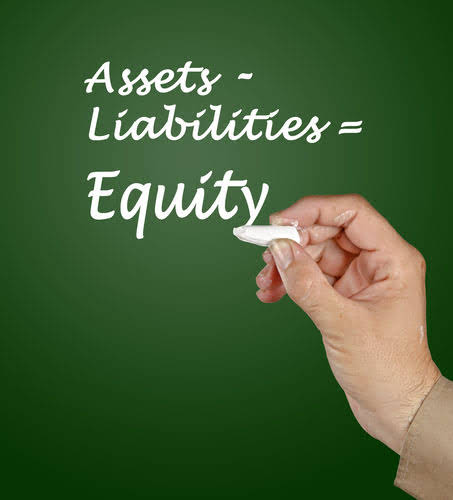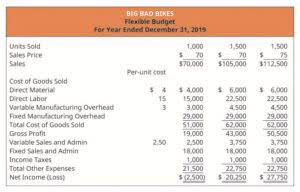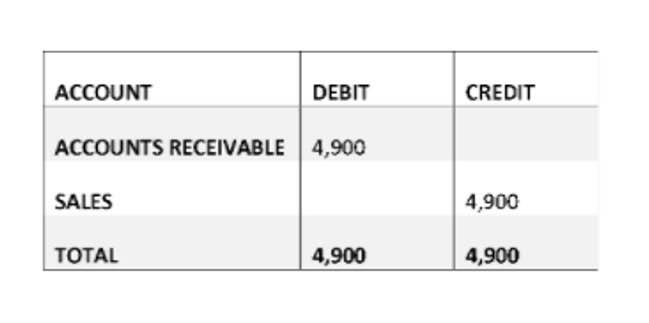Return on Equity ROE Definition, Formula, and Example

You know exactly how much you sell each cup of lemonade for and how much the ingredients cost. Recognizing these areas is vital, allowing the company to address weaknesses, harness strengths, and ultimately, aim for that top spot in the business sector. Store A has managed to earn the same income with less equity, leading to a higher ROE. For this reason, an ROE that is very high is something to be suspicious of. If the ROE is either much lower or much higher than companies in the same industry, you should investigate further. To understand how to use ROE, it can be useful to walk through an example.

Cash ratio equation
Here they see the equity multiple and total asset turnover remained exactly constant over year two. If shareholders’ equity is negative, the most common issue is excessive debt or inconsistent profitability. However, there are exceptions to that rule for companies that are profitable and have been using cash flow to buy back their own shares.

Return on Equity Formula (ROE)
- That’s because different types of companies have varying levels of assets and debts on their balance sheets and differing levels of income.
- This balance sheet gives us the Beginning Shareholders’ Equity and the Ending Shareholders’ Equity.
- Generally the higher the ROE the better, but it is best to look at companies within the same industry or sector with one another in order to make comparisons.
- If the firm’s ROE is steadily increasing in a sustainable manner—increases are not sudden or really huge—you might conclude that management is doing a good job.
- Our writing and editorial staff are a team of experts holding advanced financial designations and have written for most major financial media publications.
- A high number suggests that a company may be able to grow its earnings over time by reinvesting them back into the business, though this is not guaranteed.
Return on equity is calculated by dividing net income by shareholders’ equity. You can either calculate ROE yourself or find it on financial websites like Stock Analysis. A high ROE is a positive sign to investors, signaling that a company is effectively producing profits with the money invested into it. It’s also a growth signal, as a high number indicates that a business may be able to increase its earnings over time. Many investors also choose to calculate the return on equity at the beginning of a period and the end of a period to see the change in return.
- For many companies, this is an alternative to paying dividends, and it can eventually reduce equity (buybacks are subtracted from equity) enough to turn the calculation negative.
- 11 Financial is a registered investment adviser located in Lufkin, Texas.
- A high ROE suggests that the company is generating significant profits, efficiently utilizing its assets, and has a solid financial position.
- There are many reasons why a company’s ROE may beat the historical average or fall short of it.
- Although return on equity can give you a lot of insight on your business, it does have its limitations.
Do you own a business?
If your assets are financed by debt, it’ll be listed as a liability on your balance sheet. Assets financed by investors and common inventory will be listed as shareholder’s equity on your balance sheet. As you can see, after preferred dividends are removed from net income Tammy’s ROE is 1.8.
- Therefore, ROE should be used in conjunction with other metrics such as ROA, ROIC, and EPS growth to evaluate the actual financial health of a company.
- But if its ROE is decreasing over time, that could suggest that management is struggling to make the best decisions for the company’s bottom line.
- Remember, your net income is made up of your total revenue minus your expenses.
- However, prudent investors will also take many other factors into consideration, such as earnings per share, return on invested capital, and return on total assets, before deciding to invest.
- Because shareholders’ equity is equal to a company’s assets minus its debt, ROE is a way of showing a company’s return on net assets.
- You know exactly how much you sell each cup of lemonade for and how much the ingredients cost.
Comparing Return on Equity (ROE)
ROE is sometimes used to estimate how efficiently a company’s management is able to generate profit with the assets they have available. There are many reasons why a company’s ROE may beat the historical average or fall short of it. For that reason, investors often look at complementary metrics, such as ROIC, to help understand the full picture of the business. The return on equity, or “ROE”, is a metric that represents how profitable the company has been, taking into account the contributions of its shareholders. While helpful, ROE should not be the only metric used to gauge a company’s financial health and prospects. When taken alone, there are a number of ways that the ROE calculation can be misleading.

Created by the American chemicals corporation DuPont in the 1920s, this analysis reveals which factors are contributing the most (or the least) to a firm’s ROE. A negative ROE due to the company having a net loss or negative shareholders’ equity cannot be used to analyze the company, nor can it be used to compare against companies with a positive ROE. The term ROE is a misnomer in this situation as there is no return; the more appropriate classification is to consider what the loss is on equity. Because net income is earned over a period of time and shareholders’ equity is a balance sheet account often reporting on a single specific period, an analyst should take an average equity balance.
What is a Good Return on Equity Ratio?

That being said, investors want to see a high return on equity ratio because this indicates that the company is using its investors’ funds effectively. Higher ratios are almost always better than lower ratios, but have to be compared to other companies’ ratios in the industry. Since every industry has different levels of investors and income, ROE can’t be used to compare companies outside of their industries very effectively. In this case, preferred dividends are not included in the calculation because these profits are not available to common stockholders. Preferred dividends are then taken out of net income for the calculation.
There are a variety of accounting formulas for businesses that can be used for a variety of purposes, such as producing a statement of cash flows, reviewing inventory turnover, and analyzing total sales. Below are some of the most common accounting equations that businesses should know. With the accounting equation, you can better manage your business’s finances and evaluate your business transactions to determine whether they’re accurately reported. If both ledgers of your balance sheet don’t match, there may be an error. Even though the Dupont method goes above and beyond a simple ROE calculation to give investors a better look at a company’s operations, profitability, asset value and debt accumulation, it still has limitations.
This result means that the business returns 1 dollar of value for every 10 dollars of net capital assets. As the net equity can fluctuate over the year you can input its arithmetic average instead. If your company has a net loss or negative shareholders’ equity, you should not calculate return on equity.
- Our work has been directly cited by organizations including Entrepreneur, Business Insider, Investopedia, Forbes, CNBC, and many others.
- Economists say that it is about 10-15% – such value is supposed to be likely to keep.
- It’s possible that this number will demonstrate a net loss when your business is in its early stages.
- For example, say that two competing stores both earn $100 million in income over a period.
- Return on equity is considered a gauge of a corporation’s profitability and how efficiently it generates those profits.
- An improving or declining ROE on a year-over-year basis can affect investors’ views of that company.
What Is a Good ROE?
Company or shareholders’ equity is equal to a firm’s total assets minus its total liabilities. To calculate your ROE ratio, you need your income statement which of the following equations is used to calculate return on equity? and balance sheet to find your net income and shareholders’ equity. Your ROE shows your company’s ability to turn equity investments into profits.
